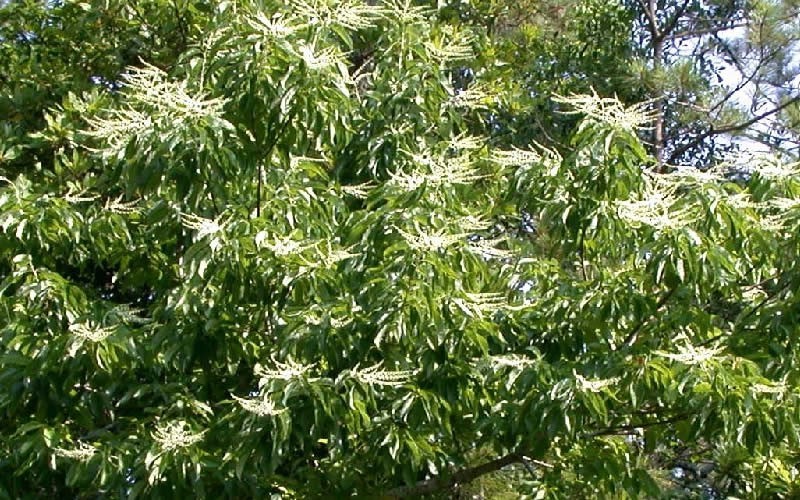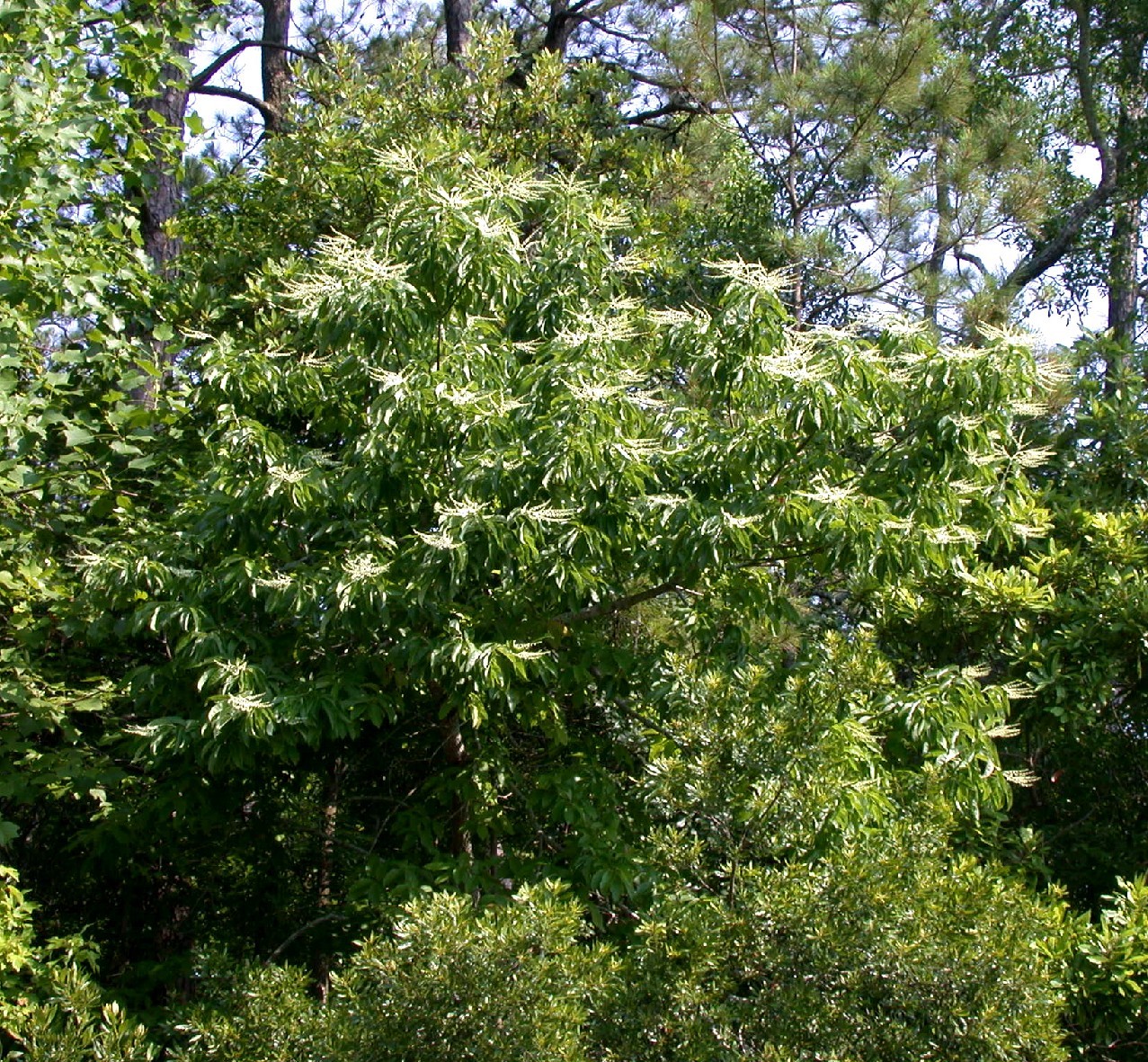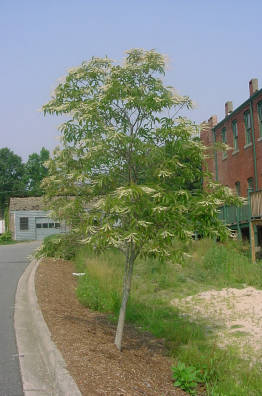Sourwood Tree Biography
Sourwood is the only member of its genus. There are no known subspecies, varieties or forms, but there are two known cultivars, "Chameleoni" and "Mt. Charm." Sourwood is also called the sorrel tree, lily-of-the-valley tree, titi tree, arrowwood, sorrel gum, elk tree and sour gum. Its genus name, Oxydendrum, is derived from the Greek word for a "sour tree," because its foliage tastes bitter due to the oxalic acid in the tissues o the leaves.
Sourwood belongs to the Ericaceae (heath) family. It is related to azaleas, heather, huckleberry, cranberries, blueberries, laurel, rhododendrons and manzanita.
Sourwood grows in the eastern and southeastern United States, in USDA hardiness zones 5 through 9A. It ranges from Illinois to Florida, though it has also been found in Texas.
Sourwood ranges from the southern tip of Illinois to the gulf coast in Louisiana to Florida. The tree is listed as threatened in Indiana and endangered in Maryland. Sourwood grows best in moist, well-drained acidic soil with a pH range of 3.7 to 6.5.
While sourwood can survive a dry location once it has been established, it is very sensitive to drought and intense heat. It prefers full to partial sun.
Although its leaves are sour, its wood is not. The wood, which has no taste or odor, is hard, dense and close-grained. Its heartwood, which is difficult to find among all the sapwood, is light gray with a hint of brown and red. Sourwood's wood has been used for tool handles, sliding bearings for wheels, machine parts, butter paddles, arrow shafts, sled runners and fuel.
Sourwood is the only member of its genus. There are no known subspecies, varieties or forms, but there are two known cultivars, "Chameleoni" and "Mt. Charm." Sourwood is also called the sorrel tree, lily-of-the-valley tree, titi tree, arrowwood, sorrel gum, elk tree and sour gum. Its genus name, Oxydendrum, is derived from the Greek word for a "sour tree," because its foliage tastes bitter due to the oxalic acid in the tissues o the leaves.
Sourwood belongs to the Ericaceae (heath) family. It is related to azaleas, heather, huckleberry, cranberries, blueberries, laurel, rhododendrons and manzanita.
Sourwood grows in the eastern and southeastern United States, in USDA hardiness zones 5 through 9A. It ranges from Illinois to Florida, though it has also been found in Texas.
Sourwood ranges from the southern tip of Illinois to the gulf coast in Louisiana to Florida. The tree is listed as threatened in Indiana and endangered in Maryland. Sourwood grows best in moist, well-drained acidic soil with a pH range of 3.7 to 6.5.
While sourwood can survive a dry location once it has been established, it is very sensitive to drought and intense heat. It prefers full to partial sun.
Although its leaves are sour, its wood is not. The wood, which has no taste or odor, is hard, dense and close-grained. Its heartwood, which is difficult to find among all the sapwood, is light gray with a hint of brown and red. Sourwood's wood has been used for tool handles, sliding bearings for wheels, machine parts, butter paddles, arrow shafts, sled runners and fuel.
Sourwood Tree
Sourwood Tree
Sourwood Tree
Sourwood Tree
Sourwood Tree
Sourwood Tree
Sourwood Tree
Sourwood Tree
Sourwood Tree Shade Tree
Sourwood Tree








No comments:
Post a Comment